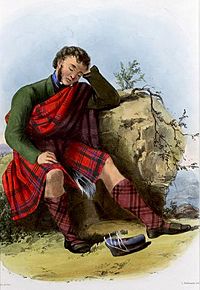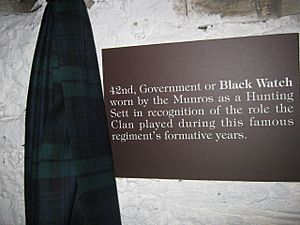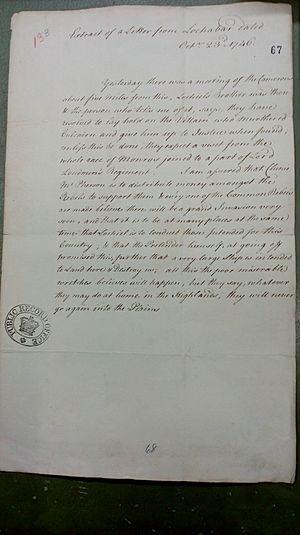Clan Munro facts for kids
Quick facts for kids Clan Munro |
|||
|---|---|---|---|
| Clann an Rothaich | |||

Crest: An eagle perching Proper
|
|||
| Motto | Dread God | ||
| War cry | Caisteal Folais 'na Theine | ||
| Profile | |||
| Region | Highland | ||
| District | Easter-Ross | ||
| Plant badge | Common club moss | ||
| Pipe music | Bealach na Broige | ||
| Chief | |||
 |
|||
| Hector Munro of Foulis | |||
| The 35th Chief of Clan Munro (Tighearna Foghlais) | |||
| Seat | Foulis Castle | ||
|
|||
|
|||
|
|||
|
|||
|
|||
Clan Munro is a historic Scottish clan from the Highlands of Scotland. Their traditional home is in Easter Ross, a region in the north of Scotland. The name "Munro" comes from the Gaelic words Rothach or Roich, which mean "Man from Ro," possibly referring to the River Roe in Ireland.
According to old stories, the clan's founder was Donald Munro, who came from Ireland in the 11th century. He supposedly helped Malcolm II of Scotland defeat the Vikings. The land given to him became known as Ferindonald, meaning "Donald's lands." The first chief confirmed by historical records was Robert de Munro, who died in 1369. The clan chiefs originally lived in Findon but moved to Foulis in 1350.
Over the centuries, the Munros were involved in many conflicts. They often fought with their neighbors, the Clan Mackenzie. In the 17th century, many Munros bravely fought in the Thirty Years' War in Europe, supporting Protestantism. During the Scottish Civil War, different Munros supported either the King (Royalists) or the Scottish Parliament (Covenanters). Later, in the 18th century, the Munro chiefs strongly supported the British Government against the Jacobite risings.
Contents
- The Story of Clan Munro
- Notable Munros in Later Times
- Munros in the Clergy
- Clan Castles
- Clan Chiefs
- Clan Tartans
- See also
The Story of Clan Munro
Where Did the Munros Come From?
Traditional Beginnings
Clan Munro has a long history, with traditions saying they came from Ireland in the 11th century. The story tells of a chief named Donald Munro, son of an Irish chief, who helped the Scottish King Malcolm II. Because of his help, Donald was given land that became known as Ferindonald, or "Donald's lands." This area is a narrow strip along the Cromarty Firth in the Scottish Highlands.
Some historians suggest that the "Donald" mentioned in these stories might have lived later, around the late 13th century. DNA studies show that many Munro men share a common ancestor from around the 14th century. These studies also suggest a connection to families from Southwest Ireland, which fits with the clan's traditional Irish origins.
Munros in the Wars of Scottish Independence
During the Wars of Scottish Independence, the Munros were loyal to Robert the Bruce. It is said that chief Robert Munro led the clan at the famous Battle of Bannockburn in 1314. While Robert survived, his son George was killed in the battle. Later, Robert's grandson, also named George, led the clan at the Battle of Halidon Hill in 1333, where he also died.
Early Recorded History
The first chief of Clan Munro that we have clear historical records for is Robert de Munro, who died in 1369. He was connected to the Earl of Ross and received land grants from King David II of Scotland. The "de" in his name suggests some Norman influence, as the Normans brought the feudal system to Scotland. Robert de Munro was killed in a fight while defending the Earl of Ross. His son, Hugh Munro, also received land grants.
It's important to remember that not everyone with the Munro name is directly related to the chiefs. Many people took the clan's name to show loyalty, for protection, or to get support from the powerful clan.
Clan Conflicts in the 15th Century

In 1411, a big dispute happened over the Earldom of Ross. This led to the Battle of Harlaw, where chief Hugh Munro supported the Lord of the Isles. The Munros are said to have fought against an army from the Scottish Lowlands. In 1428, King James I of Scotland visited Inverness to strengthen his power, and some Munros were forgiven for past actions.
In 1452, the Clan Mackenzie rebelled and took the Earl of Ross's nephew hostage. This led to the Battle of Bealach nam Broig, where the Munros and Dingwalls rescued the hostage. They defeated their enemies but lost many of their own men. Two years later, in 1454, John Munro of Milntown led the clan on a raid into Perthshire. On their way back, they were ambushed by the Clan Mackintosh at the Battle of Clachnaharry.
In 1495, many Highland chiefs, including the Munro and Mackenzie chiefs, pledged their loyalty to King James of Scotland. In 1497, the Clan MacDonald of Lochalsh rebelled and invaded Ross-shire. Some historians say the Munros and Mackenzies defeated them at the Battle of Drumchatt (1497). However, other historians say the Munros and Mackenzies actually fought each other at Drumchatt in 1501.
Around 1500, the Munros of Milntown started building Milntown Castle. The Clan Ross opposed this because it was too close to their Balnagown Castle.
Clan Conflicts in the 16th Century
In the early 1500s, a rebellion against the King started by Domhnall Dubh, chief of Clan MacDonald. In 1505, William Munro of Foulis was killed by Cameron of Lochiel while on "the King's business." The Clan Cameron tradition says they defeated a combined force of Munros and Mackays at the Battle of Achnashellach that year.
In 1527, a "bond of friendship" was signed in Inverness between Chief Hector Munro of Foulis and other powerful clan chiefs, including the Clan Campbell of Cawdor, Clan Mackintosh, Clan Rose, and Clan MacDonald of Sleat. This agreement meant they would help and defend each other.
In 1547, Robert Munro, 14th Baron of Foulis, was killed at the Battle of Pinkie Cleugh while fighting against the English. In 1562, when Mary, Queen of Scots, visited Inverness Castle, the gates were closed to her. The Frasers and Munros, known as brave clans, helped the Queen by taking the castle during the Siege of Inverness (1562).
Between 1569 and 1573, Andrew Munro of Milntown defended Castle Chanonry of Ross for three years against the Clan MacKenzie. This conflict caused many losses on both sides. The dispute ended when the castle was given to the Mackenzies. In 1597, the Battle of Logiebride took place between the Munros and the Bain of Tulloch family against the Mackenzies and MacLeods of Raasay.
The 17th Century: Wars and Changes
Munros in the Thirty Years' War
In the early 1600s, many Munros continued their strong military tradition. Robert Munro, 18th Baron of Foulis, known as the Black Baron, led 700 members of Clan Munro to fight in the Thirty Years' War in Europe. They joined the army of Gustavus Adolphus to defend Protestantism. Robert died in 1633. General Robert Monro of the Obsdale branch, a cousin of the Black Baron, also played a big role. His soldiers were called the "Invincibles" because of their skill. General Monro wrote a book about his experiences. Many Munros served as officers in the Swedish army.
Bishops' Wars and Civil War in Scotland
During the Bishops' Wars, General Robert Monro captured several castles in Scotland. From 1642 to 1648, he led the Scottish Covenanter army in Ireland. Many Munro officers fought for the Covenanters at the Battle of Philiphaugh in 1645.
Sir George Munro, 1st of Newmore, who fought in Ireland, later supported the Royalists. In 1648, his forces defeated the Covenanters at the Battle of Stirling (1648). In 1649, Colonel John Munro of Lemlair supported the Royalists during the Siege of Inverness (1649). When James Graham, 1st Marquess of Montrose, a Royalist leader, landed in Ross-shire, the Munros, Rosses, and Sutherlands opposed him. The Munros, led by John Munro of Lemlair, and their allies defeated Montrose's army at the Battle of Carbisdale in 1650.
By 1651, the Scottish Covenanter Government changed its mind and supported the Royalists. After the King was restored to power in 1660, George Munro, 1st of Newmore, commanded the King's forces in Scotland from 1674 to 1677.
In 1689, chief Sir John Munro, 4th Baronet, helped approve the offer of the Scottish Crown to William of Orange. In the same year, George Munro, 1st of Auchinbowie, led Royalist forces to victory against the Jacobites at the Battle of Dunkeld.
The 18th Century: Jacobite Risings and New Roles
After the Union of the Crowns in 1603, Scotland and England shared a king. In 1707, their parliaments also united to form the Kingdom of Great Britain.
The Jacobite Rising of 1715
During the Jacobite Rising of 1715, William Mackenzie, 5th Earl of Seaforth, led 3000 Jacobite supporters. They forced a smaller British Government force to retreat at the Skirmish of Alness. This government force included the Munros, led by Sir Robert Munro, 6th Baronet of Foulis. The Munros' lands were plundered, but they got revenge by raiding the Mackenzie lands in the Siege of Brahan.
The Siege of Inverness (1715) ended when the Jacobite soldiers surrendered. Colonel Sir Robert Munro then took control of Inverness as governor. Government troops arrived to disarm the rebels, with help from a Munro group. The clan rivalries also played out in local politics. The Munros controlled the town of Dingwall for many years. George Munro, 1st of Culcairn, raised a company of Munros to fight at the Battle of Glen Shiel in 1719, where they defeated the Jacobites.
The Black Watch and Fighting France
In 1724, an estimate suggested the Munros and Rosses together could raise 700 men. In 1725, six Independent Highland Companies were formed, including one of Munros. These companies were known as Am Freiceadan Dubh, or the Black Watch. By 1740, this group became the 43rd Highland regiment (later the 42nd). Sir Robert Munro was appointed lieutenant-colonel. His brother, George Munro, 1st of Culcairn, was also a captain.
Their first major battle was on May 11, 1745, at the Battle of Fontenoy in Europe. The Highlanders fought in their own unique way. Colonel Sir Robert Munro told his men to "clap to the ground" when the French fired, while he stood alone. They used a new tactic of firing and taking cover, driving back the enemy.
The Jacobite Rising of 1745
In June 1745, Sir Robert Munro was given command of the English 37th Regiment of Foot. When the Jacobite rising of 1745 began, the Munros supported the British Government.
Sir Robert Munro was fighting at the second Battle of Falkirk (1746). The English 37th Regiment he commanded was said to have retreated, and he was surrounded by seven Jacobites. He fought bravely, killing at least two with his half-pike before being shot. The Jacobites buried him with honor in the grave of Sir John de Graham, who died at the first Battle of Falkirk (1298).
Robert's son, Sir Harry Munro, 7th Baronet, was captured at the Battle of Prestonpans in 1745. He returned home to find Foulis Castle partly destroyed by Jacobites. A few months after Falkirk, the Jacobites were finally defeated at the Battle of Culloden. After the rebellion, a Munro company under Harry helped police the Highlands. Harry then rebuilt Foulis Castle, making it look more like a grand mansion than a fort.
In 1754, Lieutenant Hector Munro, 8th of Novar, captured a famous rebel known as "Sergent Mor" of Clan Cameron.
Notable Munros in Later Times
Military Leaders
Many Munros became important military figures in the British Empire. Sir Hector Munro, 8th of Novar (1726–1805), Sir Thomas Munro, 1st Baronet of Lindertis (1761–1827), and John Munro, 9th of Teaninich (born 1778) were all Scottish Generals who achieved great success in India. James Munro (VC) received the Victoria Cross for his bravery during the Crimean War.
Mountaineering
Sir Hugh Munro, 4th Baronet (of Lindertis) (1856–1919) was a key member of the Scottish Mountaineering Club. He created the first official list of all the mountains in Scotland over 3000 feet tall. These mountains are now famously known as Munros.
Science and Medicine
Four generations of the Munro of Auchinbowie-Bearcrofts branch were professors of anatomy at Edinburgh University. These included John Munro (surgeon), Alexander Monro (primus), Alexander Monro (secundus), and Alexander Monro (tertius). From the Monro of Fyrish branch, four generations served as the main physician of Bethlem Royal Hospital.
Academia
John U. Monro, who was the dean of Harvard College, belonged to the Lexington, Massachusetts branch of Clan Munro. His younger brother, Sutton Monro, helped create the Robbins–Monro algorithm, a mathematical method.
Fifth President of the United States
James Monroe (1758–1831), the fifth President of the United States, was a descendant of Patrick Andrew Monroe, who moved from Scotland to America in the 1600s. The spelling of surnames was not fixed back then, and Monroe is simply another way to spell Munro. He is believed to be related to Robert Munro, 14th Baron of Foulis.
Munros in the Clergy
Munros were also important religious figures in northern Scotland. Andrew Munro (died 1454) was an Archdeacon and briefly a Bishop of Ross. Sir Donald Monro was the Dean of the Isles and wrote a book about the Description of the Western Isles of Scotland in 1549. John Munro of Tain (died 1630) was a Presbyterian minister. Rev. Robert Munro (1645–1704) was a Catholic priest who faced difficulties for his beliefs and died in prison.
Clan Castles
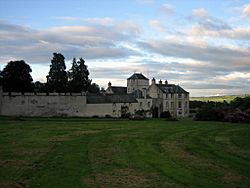
- Foulis Castle: This is the main seat of the Munros of Foulis, who are the chiefs of Clan Munro.
- Milntown Castle: This was the home of the Munros of Milntown, an important branch of the clan.
- Newmore Castle: The seat of the Munros of Newmore.
- Teaninich Castle: The seat of the Munros of Teaninich.
- Balconie Castle: The seat of the Munros of Balconie.
- Novar House: The seat of the Munros of Novar.
- Lemlair House: The seat of the Munros of Lemlair.
- Contullich Castle: Thought to have been built in the 11th century, it was owned by different branches of Clan Munro.
- Allan: Near Tain, this was the site of a castle held by the Munros.
- Ardross Castle: Originally held by the Munros, it later passed to the Clan Matheson.
- Loch Slin Castle: Near Tain, the Munros held this castle in the 17th century before it went to the Clan Mackenzie.
- Strome Castle: On the shore of Loch Carron, Hector Munro, I of Erribol, was the Governor of this castle in the early 16th century.
Clan Chiefs
A Highland Chief's position traditionally passes down to the closest male relative. However, the current chief, Eva Marion Munro, inherited the title from her father, as his sons had passed away before him. Her son, Patrick, took the surname 'Munro' to become the clan chief. The Baronetcy of Foulis, a special title, can only pass to direct male descendants.
Clan Tartans
| Tartan image | Notes |
|---|---|
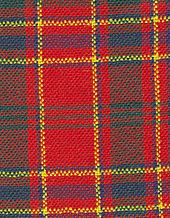 |
Munro Ancient tartan |
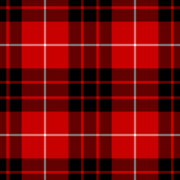 |
Monrois tartan as shown in Vestiarium Scoticum in 1842 |
See also
- Munro Baronets
- Munro (disambiguation)
- Munroe (disambiguation)
- Monro (disambiguation)
- Monroe (disambiguation)
- Black Watch Military regiment originally formed from highland clans including Clan Munro.
- Munro Mountains in Scotland with height over 3000 ft.


